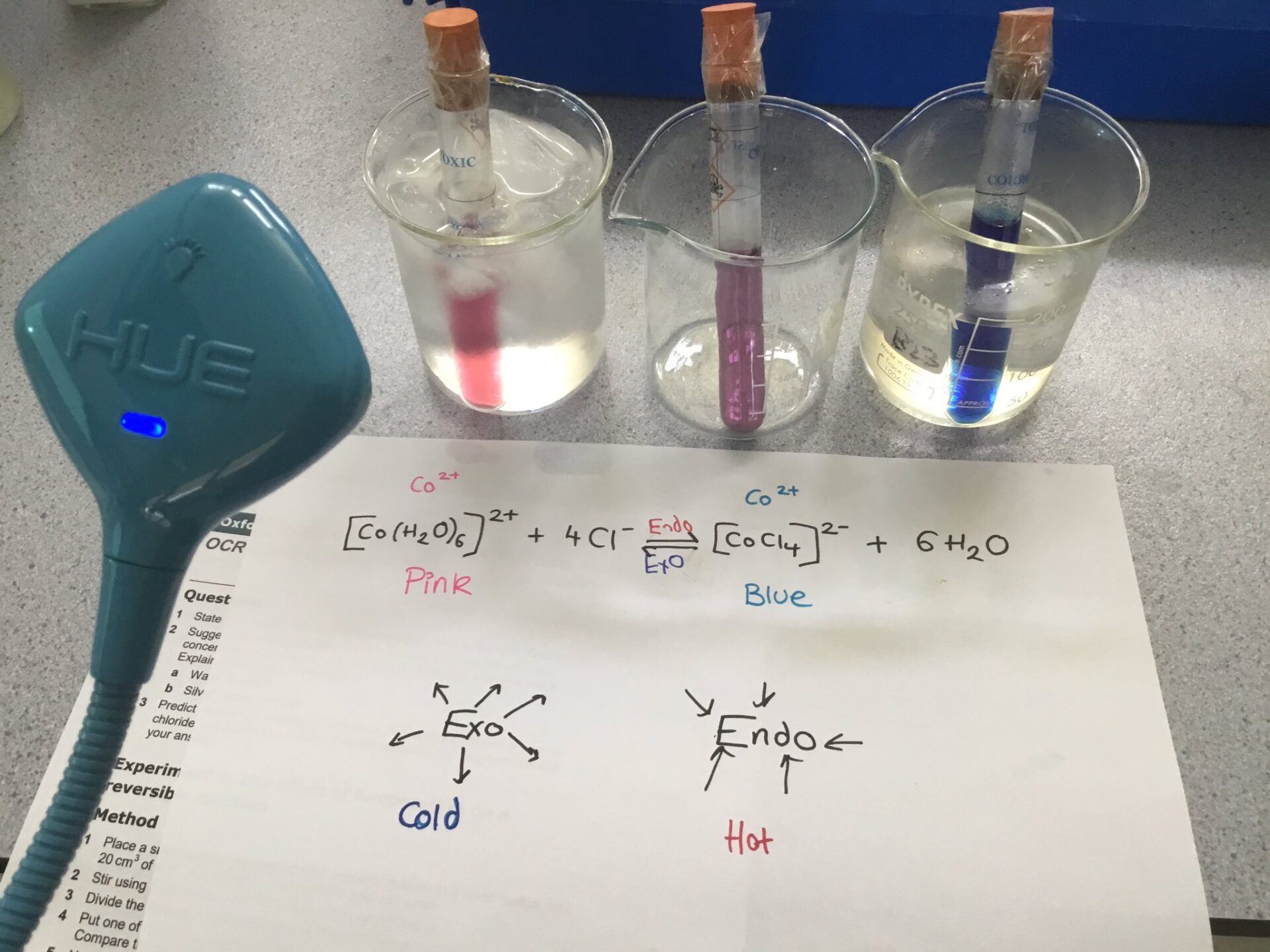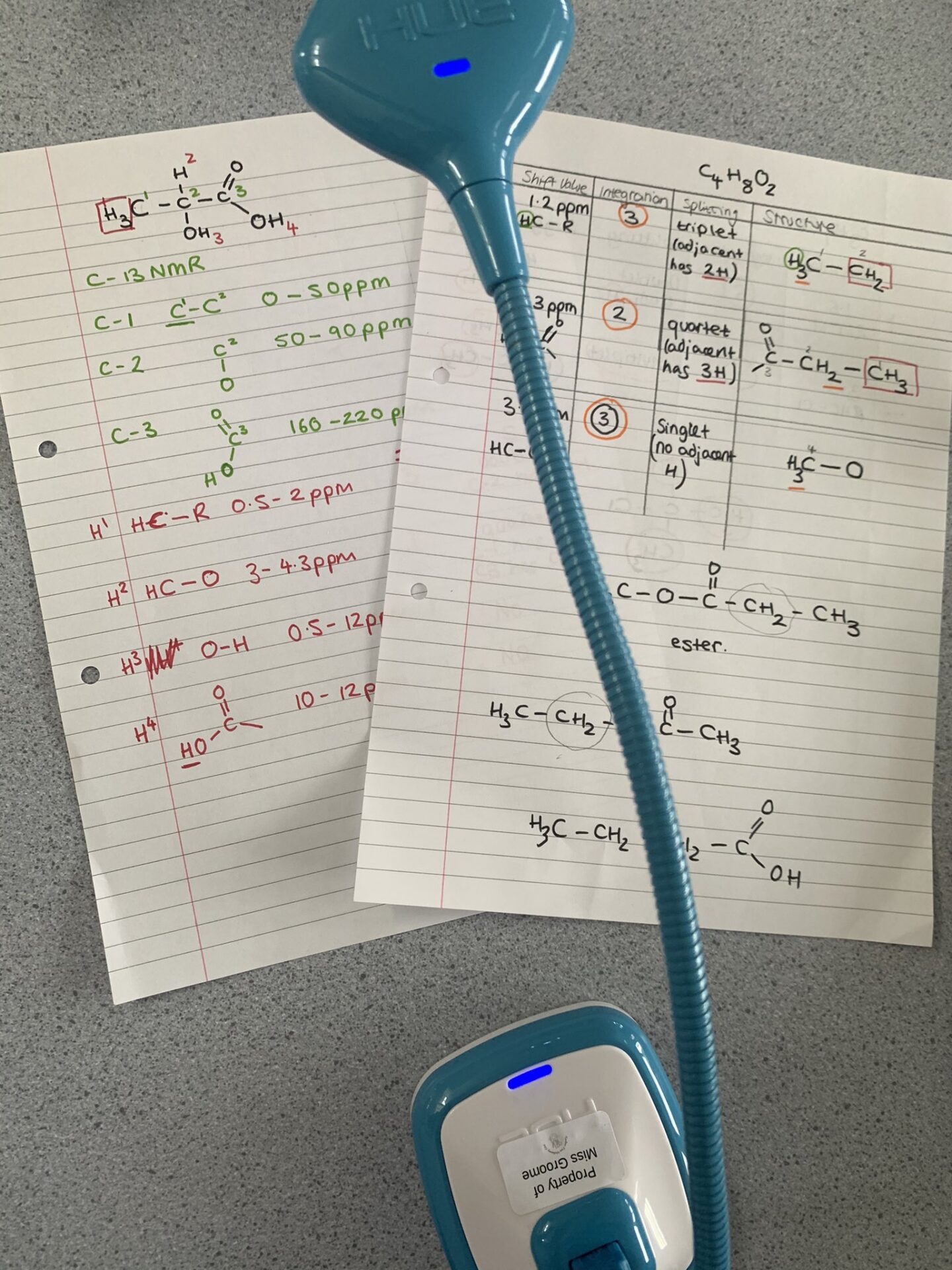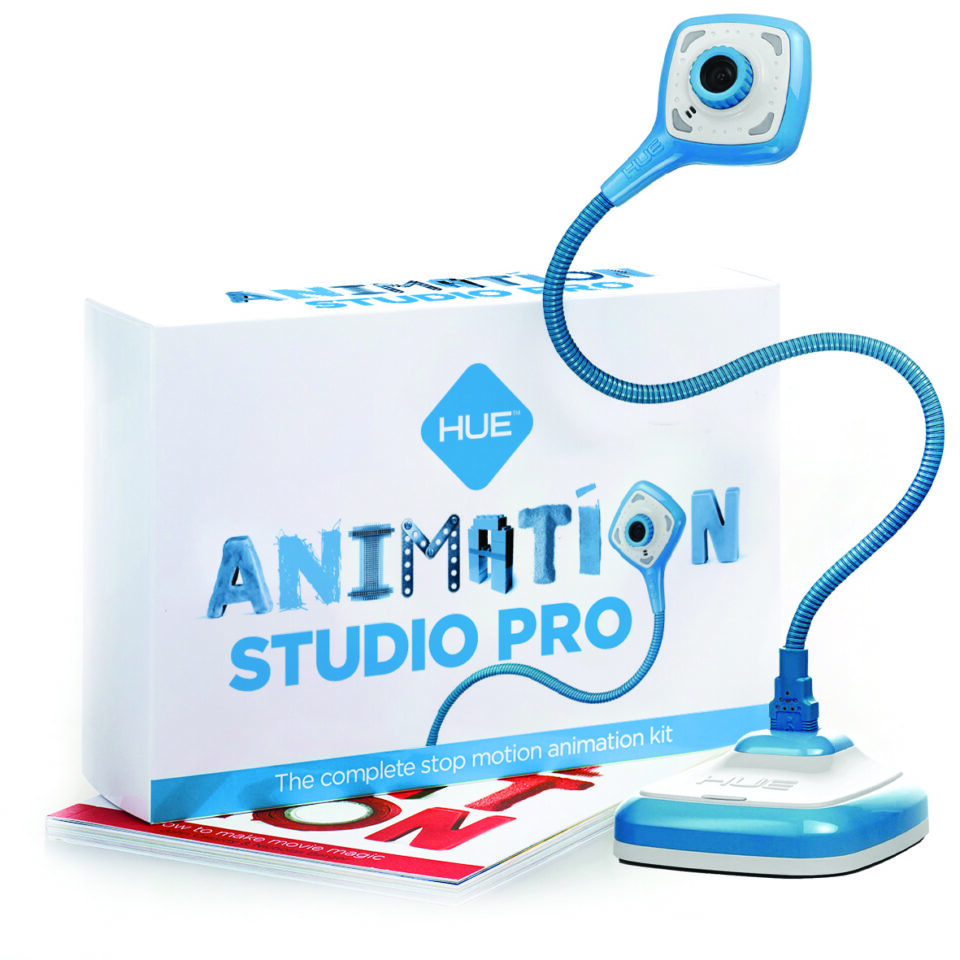
HUE HD Pro wins a NAPPA 2021 Award!

Changing things up in 2020 for virtual success
Amy Groome (@miss_groome on Twitter, @foodie_teacher37 on Instagram) is a Science teacher at Oakgrove School, a coeducational, all-through school based in Milton Keynes, England. Amy has been teaching since 2015 and is always looking for ways to improve the outcomes of students. She is involved in NQT mentoring and is an ITT Chemistry subject mentor, and has recently moved into the pastoral world as an Assistant Head of Year. In addition to her roles at school, Amy is a member of the @ChatChemistry team on Twitter and regularly hosts online discussions as well as having made guest appearances for @PracticeScience.

This is an insight into my journey, finding ways to use my HUE HD Pro visualiser to support my students during the last year. It is one piece of technology that I can’t imagine teaching being without.
During the first lockdown when school closed in March, I noticed that my year 12 students were struggling to get their head around Organic Chemistry mechanisms. This has always been an area of the A-level course that I felt confident and competent delivering. When in the classroom I would have modelled this to classes on the whiteboard, using ‘I do, we do, you do’, pointing out all the common misconceptions and pitfalls that students make. Teaching Organic Mechanism using PowerPoint presentations just didn’t work for me or the students. The arrival of my visualiser meant I could again ensure that students understood the precision they must draw their curly arrows, allowing me to teach this topic in a more accessible way to students. I also created some simple, yet effective videos using my visualiser and the HUE Camera Viewer app to recap the key concepts that the students needed.
Fast forward to September, teachers up and down the country (and across the world) were returning to very different classroom environments to the ones they had previously occupied 6 months before. For many students, the highlight of Science at secondary school is the opportunity to carry out practical work. Unfortunately, yet understandably, social distancing combined with guidance on not sharing equipment saw the death of classroom practicals as we knew. It was only after the disaster which was my first practical on ‘Rates of Reaction’, where I tried to engage the students from afar, that I returned to the drawing board and considered the use of my visualiser. It was then that I began to realise the full power it had to demonstrate, whilst engaging with students from the safety of their seats.
Making observations and taking accurate measurements of practicals using my visualiser meant that students in my class are still able to develop the key scientific skills, without having to leave their seats, and more recently their homes. During the most recent lockdown in January, I have been lucky to be able to continue to come into school to teach, and using the recording function I was able to create a series of practical videos to help support those teachers at home in my department and on Twitter.

As restrictions on movement around the classroom became stricter, I looked at other ways in which I could use my visualiser to support students and their learning in my classroom. I’ve found my visualiser useful for teaching student exam technique strategies, modelling key skills such as graph drawing and calculations. One of the topics I was most apprehensive about having to teach virtually during this lockdown was Quantitative Chemistry to year 10. Over the past few years, I’ve adapted the way I teach this topic and have found using the scaffolded table structure I’d seen in an Education in Chemistry article on ‘5 ways to explain titrations’ by Kristy Turner (@doc_kristy)! Using my visualiser to teach this has allowed me to model this technique to students and show them how to set this up to teach them how to approach these questions in a methodical manner.

The plug and play function of the HUE HD Pro allows it to easily be used with Google Meet, allowing me to easily flick between using it as a visualiser and a camera so my students can see me. With the news to return to the classroom next week, I’m excited to continue learning to find new ways to use my visualiser to support the learning and progress of students in my Chemistry Lessons.
Note from HUE: We first came across Amy via her Twitter channel where she regularly shares Chemistry-related teaching tips. Watch some of her bite-sized Le Chatelier chemistry lessons on YouTube for e-learning and revision. The videos were filmed with a HUE HD Pro camera. You can also follow her on Twitter to #ChatChemistry. Thank you Amy!

Find out more, subscribe to our blog, download resources, contact us or follow us on social media.


